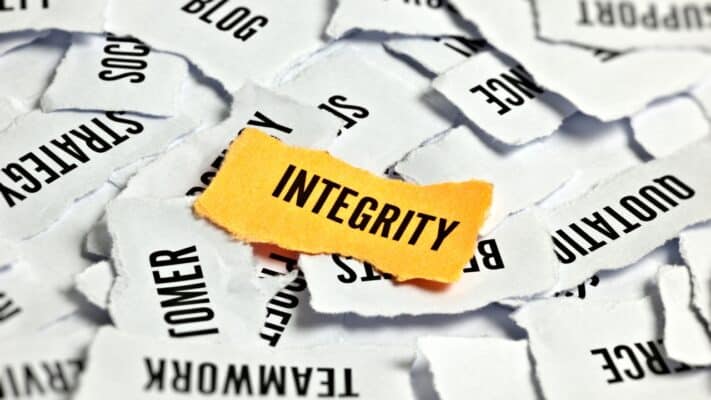
In a world that is increasingly interconnected, understanding the nuances of human communication is more important than ever. Central to this is recognizing that truth-telling is not always the default mode of human behavior. Indeed, people lie, and they do so more often than one might expect. But not all lies are the same, and not all liars tell lies for the same reasons.
This article aims to shed light on the complex world of deception by exploring the different types of lies that people tell, as well as the diverse types of liars that exist. Recognizing these distinctions can enrich our understanding of human communication, aid in maintaining healthy relationships, and perhaps even equip us with the tools to mitigate dishonesty in our lives.
So, why is it important to understand the different types of lies and liars? For one, it enables us to respond more effectively to deception when we encounter it. Furthermore, this knowledge fosters empathy by allowing us to see the world from the perspective of the liar, helping us to understand their motivations, fears, and desires. Lastly, it helps us to reflect on our own behavior and potentially encourages greater honesty in our own interactions.
In the following sections, we’ll explore various types of lies, from white lies to big lies, and examine the spectrum of liars, from occasional fibbers to compulsive deceivers. Ready for a deep dive into the world of dishonesty? Let’s get started!
The Spectrum of Lies: An Overview
In understanding dishonesty, it’s crucial to recognize that all lies aren’t created equal. Lies can range in nature, intent, and severity, forming a spectrum that reflects the complexity of human communication and interaction. To grasp this complexity, we need to venture beyond the monolithic view of lying as a uniform, undifferentiated act.
So, what exactly constitutes a lie? At its most basic, a lie is a false statement made with the deliberate intention of deceiving someone. However, this definition only scratches the surface of the diverse landscape of lies. Some lies are told to protect the feelings of others, some to gain personal advantage, and others still may be driven by deeper psychological issues.
Let’s preview the types of lies we’ll be delving into:
- White Lies: These are small, often harmless or trivial lies told to avoid hurting another person’s feelings.
- Prosocial Lies: These lies are told with the intent of benefiting others. They’re often told to maintain harmony within a group or to protect someone from harm.
- Self-serving Lies: Unlike prosocial lies, self-serving lies are told with the intent to benefit oneself, often at the expense of others. These may involve exaggerating accomplishments or denying responsibility for misdeeds.
- Pathological Lies: These lies are more concerning as they are told compulsively, without a clear benefit or reason. They can indicate underlying psychological issues.
- Big Lies: These lies are significant and impactful. They often involve the creation of a completely false narrative and can have serious consequences.
As we move through these different types of lies, remember that the intent behind the lie and the potential impact it may have are key to understanding its nature and severity. In the next section, we’ll start breaking down these categories, exploring each in greater detail to fully grasp the breadth and depth of this form of deception.
White Lies, Prosocial Lies, and Falsehoods
Let’s begin by exploring three types of lies that are commonly seen in our day-to-day interactions: white lies and prosocial lies, as well as falsehoods. While they may seem harmless or even beneficial in the short term, it’s important to understand the longer-term consequences and implications.
White Lies
We’ve all told a white lie at some point. “I love your new haircut!” or “Dinner was delicious!” when, in truth, the haircut isn’t flattering and the dinner tasted like cardboard. White lies are those small fibs we tell to spare someone’s feelings, maintain social harmony, or avoid minor conflicts.
The psychological purpose behind white lies lies in empathy. We tell these small untruths out of a desire to make others feel better or avoid discomfort. They are often seen as socially acceptable because they are told with good intentions. But what happens when these lies are discovered? While the fallout from a white lie is typically minor, frequent use of white lies can lead to a credibility issue. If people notice you often tell white lies, they may begin to question your honesty in more important matters.
Prosocial Lies
Prosocial lies are another form of lie told with good intentions. They are told to benefit others, protect their feelings, or maintain harmony within a group. For example, a team member might lie about the difficulty of a task to prevent a colleague from feeling overwhelmed, or a friend might lie about how much fun they had at a party to make the host feel successful.
Much like white lies, the social and psychological purpose of prosocial lies lies in empathy and harmony. However, they also come with potential consequences. Discovering a prosocial lie may lead to feelings of betrayal, damage trust, and in some cases, harm the very relationship the lie was meant to protect.
Falsehoods
Falsehoods, on the other hand, are statements or beliefs that are not true. Unlike lies, they aren’t always told with an intent to deceive. For instance, a person may spread false information unknowingly, genuinely believing it to be true. However, when spread, these can lead to misconceptions, misunderstandings, or even harm if the information is crucial. While not “lies” in the traditional sense, it’s important to recognize falsehoods and strive for truth and accuracy in our communication.
In summary, white lies, prosocial lies, and falsehoods, despite their good intentions or lack of malice, are not without consequences. While they can serve a purpose in easing social interactions or expressing mistaken beliefs, their discovery can lead to feelings of mistrust, confusion, and even resentment. It’s a delicate balance between preserving harmony, maintaining honesty, and ensuring the accuracy of our information.
Betrayal Lies, Big Lies, and Deceptive Lies
As we move further along the spectrum, lies become more serious and the consequences more severe. In this section, we’ll take a closer look at betrayal lies, big lies, and deceptive lies, all of which can lead to significant damage and distress when they come to light.
Betrayal Lies
Betrayal lies are perhaps some of the most damaging. These lies involve a breach of trust, often in a personal relationship. Examples can include infidelity, secret spending, or hidden addictions.
These lies are driven by a variety of motivations, including fear of consequences, a desire to avoid conflict, or a need to protect one’s image. However, when discovered, they can cause immense emotional pain and irreparable damage to the relationship.
Big Lies
Big lies are false statements that have significant implications. They differ from white lies or prosocial lies in the scale of their impact. Examples can range from lying about one’s credentials or qualifications to spreading false information about important societal issues.
Big lies are often driven by a desire for personal gain, power, or influence. Unfortunately, these lies can have far-reaching consequences when they are discovered, damaging reputations, trust, and even impacting larger societal structures or beliefs.
Deceptive Lies
Deceptive lies involve deliberate distortion or fabrication of information with the intent to mislead or deceive. This could include lying about one’s past, creating a false identity, or fabricating events that didn’t occur.
Like big lies, deceptive lies are often driven by a desire for personal gain, but they can also stem from a need to manipulate situations or people. Deceptive lies can be particularly harmful as they can cause psychological harm, damage relationships, and lead to significant distress when revealed.
In summary, betrayal lies, big lies, and deceptive lies represent some of the more serious and damaging forms of dishonesty. While the motivations behind these lies can vary, they share a common thread: they all involve a significant breach of trust and can cause extensive harm when discovered. As we navigate our relationships and our interactions with others, it’s crucial to be aware of these types of lies and their potential impacts.
More: The Psychology of Lying: Why People Lie >>
The Different Types of Liars: An Overview
Now that we’ve explored the types of lies that people tell, it’s equally important to understand that there are different types of liars as well. Just as the severity and intent of lies can vary, so too can the people who tell them.
Everyone lies occasionally, whether to spare someone’s feelings, to avoid trouble, or to get out of an awkward situation. However, when lying becomes a regular part of someone’s behavior, it’s important to recognize and understand it. In the same way that not all lies are created equal, not all liars are the same.
In this section, we will introduce the main categories of liars that psychologists often refer to. This includes occasional liars, habitual liars, and pathological liars. Each of these categories has its own unique characteristics, motivations, and potential impacts on relationships and trust.
By understanding the different types of liars, we are better equipped to navigate our relationships, recognize when we are being lied to, and take steps to encourage honesty and openness in our interactions. In the following sections, we will delve deeper into each type of liar, providing insights into their behaviors, motivations, and the potential reasons behind their dishonesty.
Occasional Liars and Habitual Liars
While everyone tells lies from time to time, not all of us are occasional or habitual liars. These terms are more than just labels—they represent distinct patterns of behavior. Let’s explore these two types of liars in detail.
Occasional Liars
Occasional liars are individuals who lie infrequently and usually with good reason. Their lies are often driven by specific circumstances and are usually told to avoid immediate negative consequences or to protect someone’s feelings. For example, they might say they’re busy to get out of an unwanted social engagement or compliment a friend’s outfit that they don’t actually like.
Occasional liars often feel guilt or discomfort when they lie, which acts as a deterrent from lying too frequently. They often lie to maintain harmony in their relationships and to avoid conflict.
Habitual Liars
Unlike occasional liars, habitual liars lie as a matter of routine. It’s a deeply ingrained behavior for them. They may lie to embellish stories, to appear more interesting or successful, or to manipulate others. Their lies may range from the small and relatively harmless to the large and potentially destructive.
Habitual liars often lie without any clear reason or immediate gain. It’s more about the habit itself than any specific outcome. Over time, their lies may become so intertwined with their reality that they struggle to distinguish truth from fiction.
Both occasional and habitual liars lie for a variety of psychological and sociological reasons. Occasional liars may lie to avoid conflict or discomfort, while habitual liars may lie due to low self-esteem or a desire for control. Understanding these types of liars can give us greater insight into why people lie and how we can encourage honesty in our relationships.
Compulsive Liars and Pathological Liars
As we dig deeper into the landscape of lying, we encounter compulsive liars and pathological liars. While these terms are often used interchangeably, they each refer to a specific pattern of deceptive behavior. Understanding these types of liars can help us navigate the complexities of human communication and relationships.
Compulsive Liars
Compulsive liars feel an irresistible urge to lie, almost as if it were a reflex. Their lies often have no clear purpose and might not benefit them in any visible way. In some cases, the lies told by compulsive liars can be easily disproved, yet they tell them anyway. It’s as though the act of lying is an itch they just can’t help but scratch.
A compulsive liar might lie about anything, from what they ate for breakfast to where they’ve traveled. Over time, compulsive lying can strain relationships and cause significant emotional distress for the liar and those around them.
Pathological Liars
Pathological lying is a step beyond compulsive lying. Pathological liars also lie frequently, but their lies often serve a purpose, usually to manipulate the perception of others and to create a persona that matches their ideal self.
Unlike compulsive liars, who may feel an itch to lie about anything, pathological liars often construct elaborate, detailed lies that paint them in a favorable light. These lies can revolve around their accomplishments, experiences, or skills, making them seem more impressive, capable, or victimized than they really are.
Pathological lying can be a symptom of certain personality disorders, such as narcissistic personality disorder or antisocial personality disorder. It can cause significant damage to personal and professional relationships and may require professional intervention to address.
Both compulsive and pathological liars often need psychological help to address their lying. Compulsive lying may be associated with conditions like impulse control disorders, while pathological lying can be related to personality disorders. Understanding these types of liars is not about passing judgment, but rather about promoting empathy, awareness, and, where possible, support.
Final Thoughts
As we draw our exploration to a close, it becomes clear that lying is far from a one-size-fits-all concept. From white lies whispered to protect someone’s feelings to the intricate webs woven by pathological liars, deceit can take on myriad forms. Similarly, those who lie are not stamped from the same mold: the occasional fibber stands at a far cry from the habitual or compulsive liar.
Understanding these distinctions allows us to navigate the labyrinth of human communication with greater knowledge and sensitivity. It arms us with the tools to foster a culture of honesty in our personal and professional lives and to address deceit when it occurs in a manner that is both effective and empathetic.
Yet, our journey through the spectrum of lies and liars is not about becoming distrustful, but rather about fostering understanding. By acknowledging the complexities of lying, we can better promote transparency and trust in our interactions, creating healthier relationships and communities. In the end, understanding lies and liars does not just illuminate the shadows of deceit; it also shines a spotlight on the importance of truth.














